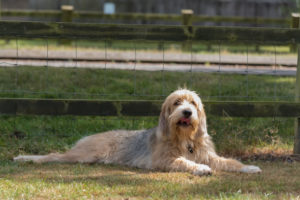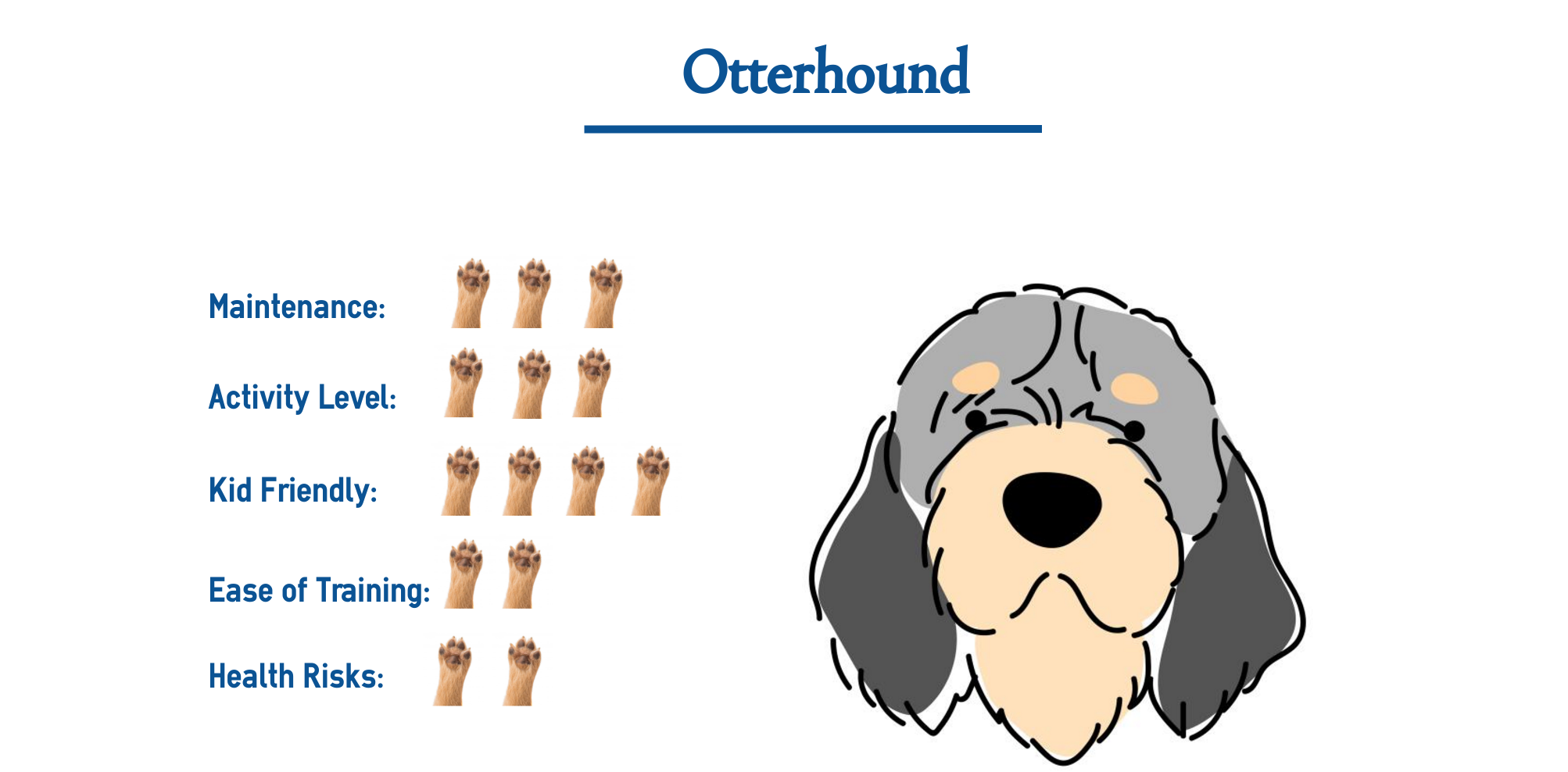Okay, let’s be honest here. The Otterhound Dog will probably not be considered the most attractive dog breed in the world. Although, one might argue that beauty is in the eye of the beholder. Because while one might not use the word “beautiful” to describe them, we here at IndulgeYourPet, could certainly imagine one using the word “adorable” or “ruggedly handsome,” so there you go!
 And even if…
And even if…
These guys aren’t the “prettiest” dogs in the world; there are plenty of traits about these guys, which to many, make them a much better choice than some of our “fancier” dog breeds that are available.
For example…
This hound is one of the best hunting dogs out there. After all, he is being called an Otterhound for nothing! This is why it shouldn’t surprise you that most Otterhounds are good at hunting. Otterhounds have a compelling sense of smell, making them very good at tracking their prey, whether an actual otter or some other type of critter.
Plus…
These guys are also very cheerful and enthusiastic, making them an ideal choice for any family looking for a good dog. He is calm and composed at most times and has a stable temperament. The Otterhound is undoubtedly not one of those dog breeds that get aggressive or shy by nature. He is friendly and good-natured and wags his tail at everyone. He is such a sweet dog and makes for an excellent companion dog.
However…
Sadly, the Otterhound is also one of the Endangered Dog Breeds that exists today simply because they were initially bred for otter hunting, a skill that is not only not used much more but is also illegal in most if not all, countries. As a result, many UK and American breeders have stopped breeding these guys, leading to a severe decline in their numbers.
The excellent news is…
Many breeders have begun to take a new “special interest” in the Otterhound dog breed choosing to “repurpose” them as therapy or companion dogs. Their laid-back nature causes them to have a calming influence on their owners.
Which is great, but is he the one for you?
Well, that depends, and it’s why we decided to write this article all about the Otterhound dog breed. This way, if you ever get an opportunity to own one, you’ll know beforehand if it will be a good fit for you.
So, without further ado, let’s dive right in!
Otterhound Dog Fast Facts
Country of Origin: England
Original Purpose: Hunting otters
Height: 24 to 28 inches at the shoulder
Weight: 65 to 125 pounds
Dog Breed Classification: Hound group
Life Span: 10 to 15 years
Origin of the Otterhound Dog Breed
The Otterhound comes from England. He was developed in medieval England by fishermen worried about the river otters getting all the fish. They wanted to create a dog that was a skilled swimmer and a great hunter. And the Otterhounds dogs they developed were that and a lot more. These hounds had webbed feet, which made them excellent swimmers. They hunted in packs and had characteristics of both terriers and hounds. Otter hunting became a major sport, and these dogs excelled at that.
The modern Otterhounds…
That we know and love today were developed by crossing different breeds such as the:
- Griffon Nivernais and the Griffon Vendeen
- With the Old Southern Hound and Bloodhound.
This mixture then led to the creation of the Otterhound Breed standard, which was devolved in 1958.
The Otterhound dog breed…
It was “officially” recognized by the American Kennel Club in 1909. But I didn’t see any real “traction” for the breed until much later, and even though there has been an Otterhound Club of America since 1960, the species remains somewhat rare even today.
Physical Characteristics
The Otterhound is a large dog, 28 inches tall, and weighs up to 125 pounds. He has the same head as a Bloodhound, a square muzzle, a large nose, deep-set eyes, and low-set ears. His tail is long and tapered. His webbed feet make him a natural swimmer.
He’s probably best known for his shabby double coat that is weather-resistant and made of a thick outer coat and a wooly and somewhat oily undercoat. The skin is black and tan, white, liver and white, and grizzle. The Otterhound is similar in appearance to the Airedale Terrier.
Temperament and Personality
The Otterhound is a bit of a klutz – he can sometimes be clumsy and messy. He gets wet and muddy and has a genuinely dirty way of eating. If you notice that your beautiful vase is broken or someone has made a mess of your beautiful Persian carpet, you know who to blame! Not his fault – that’s just the way he is. The poor creature always has an apologetic look about him. You can teach him to be less clumsy with proper training, which should begin from the puppy stage.
Also…
He has a strong prey drive, so you cannot trust him with cats and small animals. The Otterhound is a bit of a barker – he barks all the time, which can sometimes get irritating. Otterhounds are not easy to train and appropriate for experienced dog owners only. They are stubborn and independent-minded. Housebreaking them is a challenge.
But with patience and persistence, you can make him a well-trained dog by using positive reinforcement methods. The training and socialization should start right from when he is only a puppy.
Potential Health Concerns
Otterhounds are relatively healthy dogs for the most part. They have a life expectancy of 10 to 15 years. But they can suffer from specific inherited health problems such as…
- Elbow dysplasia,
- Epilepsy,
- Glanzmann’s thrombasthenia,
- Hip dysplasia,
- Hypothyroidism,
- Sebaceous cysts.
And while many of these conditions may not be life-threatening, they can become quite expensive, particularly if they become recurring issues. This is why we here at IndulgeYourPet also recommend that any new pet owner take a moment and see what it might cost for you to purchase a pet insurance policy for your new animal.
Now will a pet insurance policy be suitable for everyone?
No, probably not. But until you fully understand what these policies “will” and “won’t” cover and how much these pet insurance policies cost, how will you know if one might be right for you?
For more information on who we feel currently offers the “best” pet insurance policies out there, we would encourage you to check out our Best Pet Insurance Policies article.



